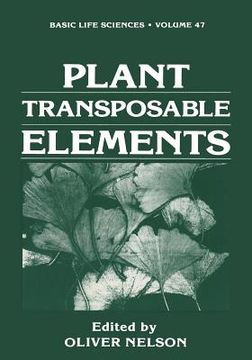Share
Plant Transposable Elements (in English)
Nelson, O. (Author)
·
Springer
· Paperback
Plant Transposable Elements (in English) - Nelson, O.
$ 104.20
$ 109.99
You save: $ 5.79
Choose the list to add your product or create one New List
✓ Product added successfully to the Wishlist.
Go to My WishlistsIt will be shipped from our warehouse between
Wednesday, June 26 and
Thursday, June 27.
You will receive it anywhere in United States between 1 and 3 business days after shipment.
Synopsis "Plant Transposable Elements (in English)"
Transposon tagging can work. Even though most of our understand- ing about the factors that contribute to a successful tagging experiment has been accumulated from a limited number of experiments using different transposable elements in different genetic backgrounds, it is still possible to draw some conclusions regarding the best experimental strategies for gene tagging. In our experience, Spm has proved to be a good element for transposon tagging. The frequency of recovering mutable alleles in- duced by Spm is not significantly different from that for Ac-Ds or for Mu 6 (summarized in Ref. 22) and varies from about 10- to 10=zr: -8pm has the unique advantage, however, in that all of the members of thiSfumily that have been examined thus far are homologous to each other at the DNA level. Therefore, by combining molecular analysis with genetic segre- gation, it is possible to identify and isolate alleles that are due to insertions of either autonomous or nonautonomous Spm elements. There are definite steps one can take to increase the chances of de- tecting a transposition into the gene of interest. The most important step is to select a genetic background in which the desired phenotype will be easy to screen. If the phenotype is not likely to be mutable, then tester lines should be constructed so as to contain flanking markers that can aid in subsequent segregation analyses.
- 0% (0)
- 0% (0)
- 0% (0)
- 0% (0)
- 0% (0)
All books in our catalog are Original.
The book is written in English.
The binding of this edition is Paperback.
✓ Producto agregado correctamente al carro, Ir a Pagar.

